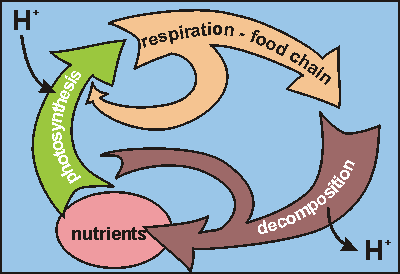Desire: the conative component
 Wednesday, August 19, 2009 at 3:09PM
Wednesday, August 19, 2009 at 3:09PM  Country of origin effects create huge value in products and travel. How much are you willing to pay for a memory?The usual view of marketing is that it is, in essence, an exchange relationship. My view is that such a definition is not supported by the evidence, and that in fact the word “relationship” in this context is ambiguous and unhelpful. Think about it: do you really want a relationship with a company before they've earned your trust?
Country of origin effects create huge value in products and travel. How much are you willing to pay for a memory?The usual view of marketing is that it is, in essence, an exchange relationship. My view is that such a definition is not supported by the evidence, and that in fact the word “relationship” in this context is ambiguous and unhelpful. Think about it: do you really want a relationship with a company before they've earned your trust?
An exchange (not yet a relationship) between parties will have several components: cognitive, affective and conative are three usual broad terms used to group these components. (There are other ways to name these exchange drivers.)
Loosely, the cognitive aspects can be known (measurable) and rationalized (talked about, and even prioritized, by the customer). The affective (loosely, emotional) aspects are harder to name, and are intrinsically non-rational. The conative aspects are the most interesting in that they tend to drive a person towards an action based on desire. To make a brand desirable, then, we must strive to understand the conative aspects of the offering. More on that in a moment.
In the meantime, listen to this NPR story about genuine French-style croissants being made and sold in ... Bethesda, Maryland. Did you want to taste the croissant? Why? Is this about product, service, or experience? And, if you were attracted to the story, how is this a conative process and not just an affective or cognitive one? Finally ... what's that music doing at the end? Is there an ecosystem of conative elements at play in the story?
Is there an ecosystem of conative elements at play in what you offer to customers?
The right mix
The “right mix” of these components as far as a customer is concerned may vary from the way a marketing channel, or set of channels is set up by a company. That's a huge gap, but you see it all the time. When you want to dig into a product or service by reviewing its documentation, you hate seeing all those big, generic pictures of happy customers and handshakes. Give me something my cognition can process! And when you want to know that the jacket you're paying $800 for is a good buy, maybe you don't want a long explanation of the fabric's environmentally friendly production method. You'd rather know that Hugh Jackman wears it.
But such gaps can be OK, if the overall customer experience needs are handled in a sensible way. If you know the gap you have to fill to create the right blend of cognitive, conative and affective responses in the customer, you can use a different special blend for each marketing channel, or for a particular phase in the person’s relationship with an organization. (Here I mean relationship as a connection that has a switching cost value, and/or for which disappointment or regret incurs genuine pain or cost.)
Let's take an example. Apple brand “feels” a certain way when expressed on packaging; it “feels” another way when expressed in an email exchange, or a phone call, or a greeting at an Apple store. And those Apple ads with PC and Mac: they "feel" very Apple, don't they? But you don't get that same smart-alecky-ness from that beautiful box your new MacBookPro came in.
Early in your exchanges with a prospect, they're wary. You have to build trust -- and depending on what you're selling, and the nature of your brand, you need to know the right magic blend. Later on, once they trust you, you can later the blend. After all, a loyal customer doesn't need rational convincing any more. So don't annoy them with it.
It's not just about the channel, nor about the phase in the relationship. A given customer may just have a style. It may be purely rational (I can get something of suitable quality for a fair price), or largely conative (gosh, I’d love to go to Italy this Spring). Check out the Sproles Consumer Styles Index ... and then ask me about how Wal-Mart lost billions by ignoring it. (Quick and free overview here.)
Pleasure and Desire
Let's turn for just a moment to the conative aspect of how people respond to things. One of the great things about this concept is that it captures our drives to do something, or to become something, or to be something, which inherently means that it involves both a sense of self and a sense of other. From a customer experience standpoint, your exchange design, or interaction design, should incrementally, convincingly (and I would add, ethically) help your customer clarify their sense of self, and their belief that you know what they want. And then, do NOT give it to them. In fact, giving the customer everything may be exactly the wrong thing. First, it's a waste of resources. Second, doing it is based on the incorrect assumption that people want to be satisfied. Third, if your product actually does delivery everything the customer desires, then you probably haven't defined your product in a large enough way. People's imaginations are huge; given them what they want today, and tomorrow they'll be imagining something even better.
What you want is not to please them with a product, but to create a particular kind of desire for something larger, and to shape that desire so that it "feels" like your company?
So, what's the difference between pleasure and desire? Do some research ... and get back to me.
 Paul K. Ward
Paul K. Ward
Ecosystem of conative components: What an accurate and thoroughly leaden phrase.
But I wrote it. So let me deconstruct it and talk about promoting a cooking school.

conative
See the posting, but essentially, a conative component is one that instills, reinforces, or permits a person to express, a motivation to act. Now, sales and marketing people might be thinking this is a "call to action", but they'd be wrong. The "call to action" concept is oh-so-20th-century. Conation is our will, desire, motive to move from our current state to another one - a state of emotion, understanding, power, participation, risk profile, and so on.
Sales and marketing people of the Old School think of the "call to action" as being something that leads directly to a purchase, or at least to some kind of form being filled out so they've moved the person from "suspect" to "prospect".
Ack! Avoid such thinking!
The reason this is Old School is that it's company-centric terminology and data modeling. What you want to do instead is to instill in a person a feeling that motivates them to change their internal towards a new one. The new one can be characterized generally as being emotionally engaged with your product, service, experience, value, values, etc.
There are multiple analytical models for emotional engagement. Between Gallup's and Carlson's, you'll get most of the way there.
So, for example, Gallup says that emotional engagement flows from high customer confidence in your company or brand, belief in the company's (or representative's) integrity, and their feelings of pride and passion. Some of these can be measured attitudinally, some behaviorally. (Then there's a gray area we can talk about sometimes, where people's stated attitudes contradict their actual behaviors. That's fun stuff to deal with.)
So, if you want to create conation, you want to move someone from an unmotivated state to one where they feel a motion towards some brand value of yours in which they feel confident, which they believe you can deliver (or have delivered) with integrity, in which they can feel pride, and which they can passionately talk about. (If you want to get a strong sense of the meaning of passion, look the word up in the dictionary.)

top chef, or loving parent?
And so ... an example. Let's say you're trying to sell a cooking school. The marketing person of the Old School would probably do a value play: Look at all the stuff you will learn, and what a cheap price! Lots of pretty pictures of happy people cooking and eating. The marketer might add in some pictures of wise chefs in chef whites. And then there would be the "call to action": a Register button.
Contrast with the new approach: first, segment your audiences by the feelings that motivate them to go to cooking school. What might they be? Love of the craft. People who think "food is love", so they want to give more love to their families, friends -- and strangers. For the latter group, these might be the "exhibitionist cook" - a professionally-minded person with an ego about the role of chef. Maybe it's a love of a particular cuisine, which might come from the love of a particular country.
What does this analysis provide the modern, experience-based marketer? First, if these are your segments, they have different filters on what is important, different criteria for decision-making, different levels of experience, and they probably hang out in different networks, each of which is fed by different content and levels of relationship.
 Ecosystems have feedback across "channels". Original file at: www.seafriends.org.nz
Ecosystems have feedback across "channels". Original file at: www.seafriends.org.nz
ecosystems - theirs and yours
Second, what are the touchpoints that feed the ecosystem of these segments? Facebook? Partner sites? Blogs? Catalog sites? The Top Chef series on Bravo?
Notice that we assume your segments have ecosystems of their own. You bet they do. And of course you might think you need to understand the (to use Old School terms) channels they use. But an ecosystem is not like channels on a TV set. In the old days, you switched from NBC to CBS to ABC, the three main networks, and they all had their own content and news organizations -- walled off from each other. Not so with your customers' ecosystems. They interact with each other, and often very quickly. This is why they have such a nonlinear nature - wildly spreading great news, or destroying the reputation of a company in the blink of an eye. The concept of tipping point doesn't quite capture the disastrous and glorious power of such ecosystems.
Third, how can you create a transition in a person's heart/mind using these touchpoints (appropriately - be careful) towards greater confidence in you, or belief in your integrity? And so on, down the list of emotional engagement drivers. To do this, you have to leverage the concept of ecosystem yourself, creating one that dovetails with your customers' ecosystems, but which uses repeated branding elements and core values to develop your company's personality. (I think Loic Lemeur does this superbly. Don't know him? Then Google his name, and follow him on Twitter. His presence in the infosphere creates a personality for his ventures that is appealing to his demographic.) If you do this well, your "channels" will reinforce each other in meaningful, relevant ways, making them all work together more effectively.
Fourth, how can you funnel people from these touchpoints (many of which you may not be able to directly manage) into a richer, fuller experience with fewer touchpoints that are better integrated in brand and time?
 Who's the next top chef? Maybe that new grad from ICE who's set up his knives and toque just across town. All around the world, people are increasingly fascinated by and concerned with food, its preparation, enjoyment, sourcing and ethics. It's a gestalt easily leveragable by a cooking school.
Who's the next top chef? Maybe that new grad from ICE who's set up his knives and toque just across town. All around the world, people are increasingly fascinated by and concerned with food, its preparation, enjoyment, sourcing and ethics. It's a gestalt easily leveragable by a cooking school.
ego
Looking at the ego-driven professional chef, for example, perhaps they hear about a blog platform you've created just for the up-and-coming star chefs (you may target the major cities of the world). The blog platform has built in content and marketing tools for the chef and their restaurant. It creates a revenue stream for the chef/restaurant. It shows them off (perhaps because you've partnered with local food photographers in these cities).
So with this blog platform you've created a sticky touchpoint for chefs that leverages their egos to promote your cooking school. If it works well, you generate confidence. If the processes for on-boarding and servicing them work well, then you can make and keep promises to them - and that builds a sense of your integrity. And if you make the chefs look great, and give them tools to communicate to their audiences, the chefs will be proud of their relationship with you.
Will they be passionate? Will they sacrifice a bit of their ego and brand at your altar, so that you can bask in the glory they create? Will they buy from you by coming to your cooking school?
And here's the odd conclusion of 21st century marketing: when you ask them to consider it, they will not mind. You're no longer marketing and selling, per se. You're just creating an entry fee into a world they feel will enlarge them. You're no longer selling a service, or even a product, so much as you are creating a desire to participate in something that makes your customer more of what they want to be.
 High school students may not care about food, or cooking, but they may love the idea of exploring their country of origin, or a language, or a style of world music, all of which can be linked to cuisine.
High school students may not care about food, or cooking, but they may love the idea of exploring their country of origin, or a language, or a style of world music, all of which can be linked to cuisine.
loving parent
But what of your other segments? You've built a lot of great stuff for the ego-driven chef, but can you use any of that for your loving parent segment?
You bet.
You've got a blog platform. It probably contains community features such as commenting or threaded discussion. And you have a business model for the "top chef" segment that could easily include partners who create content and offer services, with you ad module.
Reskin it.
Market to big high schools in your major cities. Get the food services people on board with a campaign to attract parents into a "Cooking Food They Love" program, where the parent becomes the "top chef", the community becomes the high school kids who throw out favorite ingredients, and a competition among parents (and maybe their children) to come up with the best recipes. They don't have to invent the recipes (but they could) but they could all test them, try them - and the winner gets the honor of being on the menu at school.
Local sponsorship brings in money for the school sports team, or science club - using the ad module.
And you can use your local partnerships with photographers to make it a gorgeous, content-rich site. And hundreds or thousands of parents will pay attention - as will the press.
And if your cooking school's chefs are the panelists that judge the best recipes, you've got some major brand building going on.
Talk about an ecosystem that reinforces your value and values!
conclusion?
So: An ecosystem of conative components: What an accurate and thoroughly leaden phrase. Still, helpful.




Reader Comments